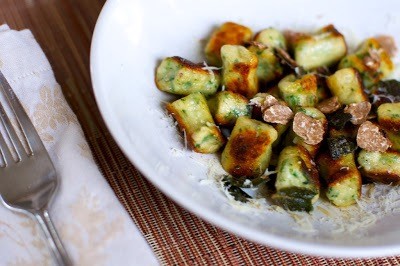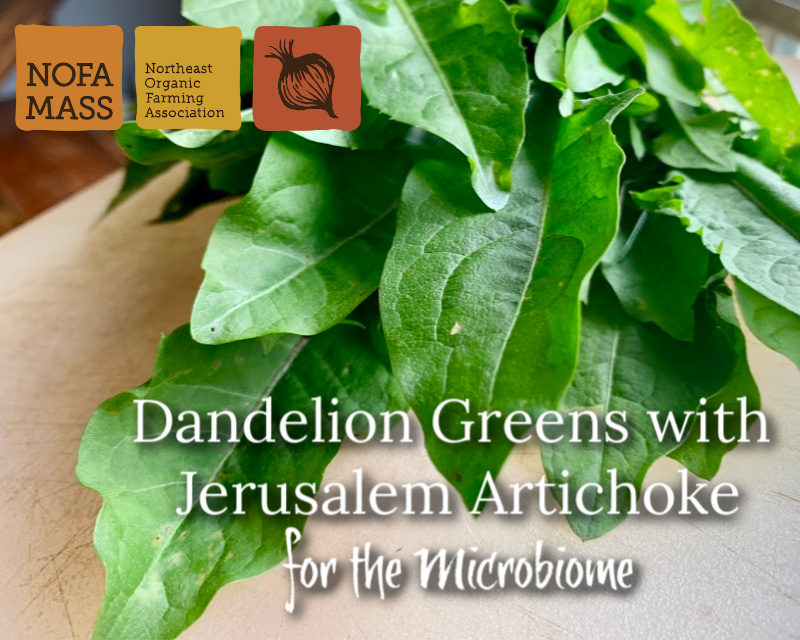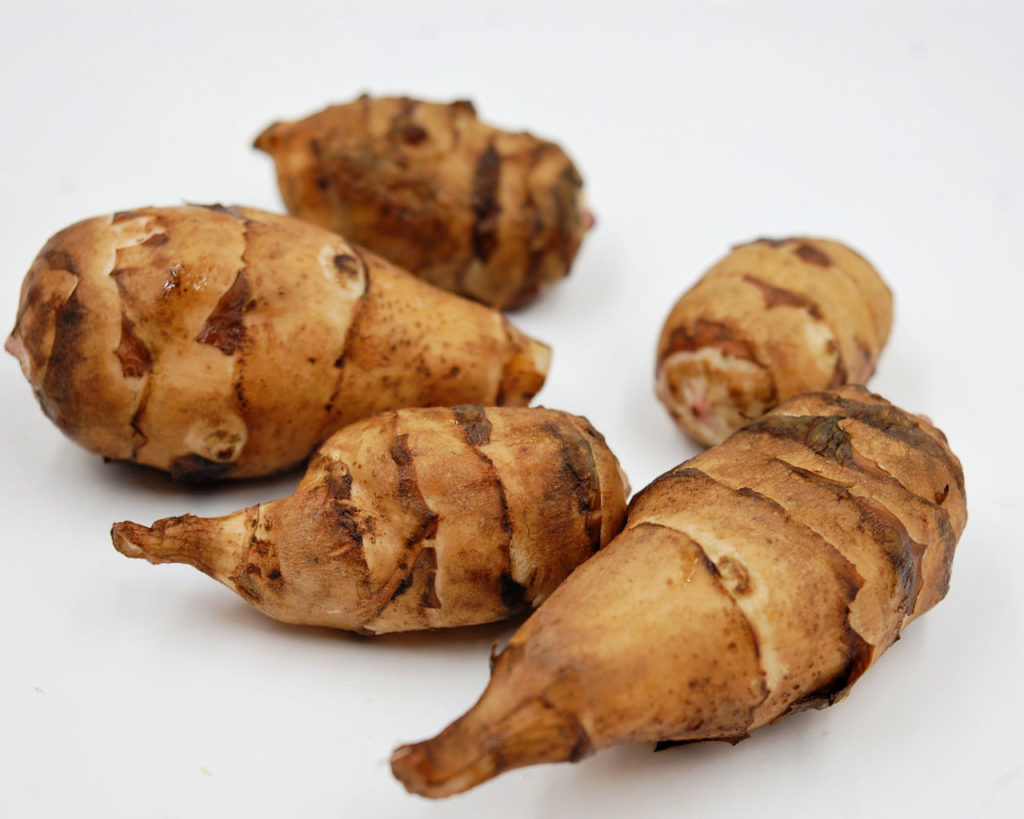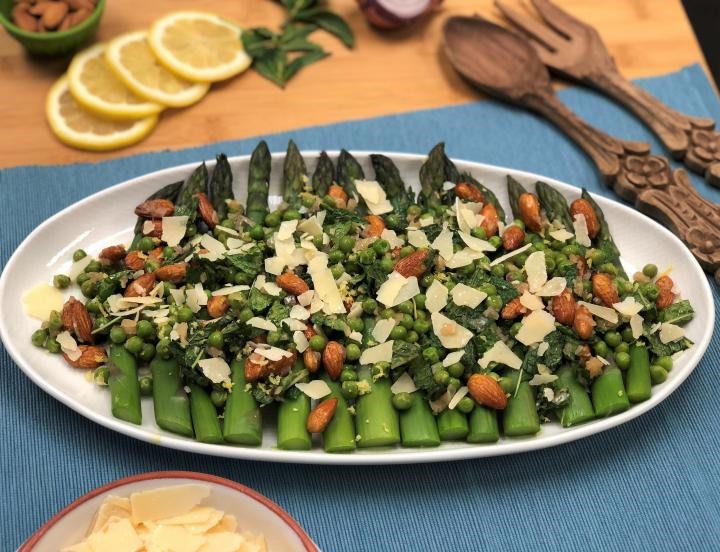Stinging Nettle Gnudi with Sage Butter

F.O.O.D. Focus on the Organic Difference
vol. 17 June 21, 2019
Recipe derived from Fat of the Land
Compiled by Celia Dolan for The Organic Food Guide and NOFA/Mass
Nettles are often associated with their vexing sting – the result of a “compound cocktail” consisting of various neurotransmitters and acids injected into the skin when a person encounters their prickly leaves and stems. But, fear not! Nettles protect themselves in such an irritating way because they house tremendous nutritional and medicinal value, and better yet, they lose their sting once cooked. Read on to learn more about this up-and-coming springtime favorite and experiment with a delicious gnocchi-esque recipe.
Nettle Nutrition Facts & Health Benefits
The prickles on these perennial plants, native to North America, Europe, Asia, and the northern regions of Africa, are called “trichomes”, which inject passersby with chemicals including histamine and formic acid (the same acid injected by many biting insects, like ants). Even their uncomfortable sting, though, can be beneficial. In a treatment called urtication, fresh nettles are slapped against arthritic limbs to encourage circulation and warm joints to alleviate pain.
Despite nettle’s initially cranky response to being touched, when consumed it regulates inflammatory pathways, which allow cells to protect the body from infections and tissue damage. Nettles also support upper respiratory health, thereby preventing nasal congestion, sore throats, and other upper respiratory infections. They contain protein (33.8%) and fiber (9.1%), and are a good source of energy and bioactive compounds, which promote good health and may prevent cancer, heart disease, and other ailments. Nettles are rich in iron, fatty acids, potassium, carotenoids, mineral salts, calcium, manganese, sodium, chlorophyll, and vitamins A, C, and K. “Great!” you exclaim. “So, where do I buy these power-packed bundles?” Well, dear reader, look no further than the next section of this post!
Obtaining Nettle
Nettles grow June through January, but are best harvested and consumed in the spring when they first grow because the leaves are smaller and more tender. These native plants are often considered weeds, but subjecting them to the abuse of a weed wacker, scuffle hoe, or even herbicides (*gasp*) seems criminal when considering their health benefits and their valuable quality of contributing to native biodiversity.
Nettles are most easily found through foraging since they grow abundantly, especially along roads, trails, waterways, and edges of fields, lawns, and farm rows. However, they can be purchased at stores and farmer’s markets as well if you do not feel inclined to forage. When shopping for nettle, look for bright green leaves with pale green undersides, and consider how the nettle was grown and harvested. Reflecting on a food’s origin, cultural significance, environmental impacts, and whether it was cultivated sustainably, organically, and humanely are always important first steps to buying ingredients for any meal, including the ingredient nettle!
Recipe
Cooking Tip: Wear gloves while preparing nettles to be cooked (unless you are anxious to practice urtication on your hands!).
Ingredients
2 cups organic ricotta
¾ cup grated organic parmesan
2 organic pasture-raised eggs
1 cup boiled and chopped wild nettles
½ cup organic flour, plus more for rolling
⅛ tsp nutmeg
Salt and pepper
Organic olive oil
Organic Butter
Fresh organic sage, chopped
Instructions
1. Blanche stinging nettles in boiling water for a minute. Drain, shock with cold water, and squeeze out as much excess water as possible. Chop finely to fill a loose cup.
2. Drain ricotta and stir into a large bowl with parmesan, eggs, chopped nettles, a dash of nutmeg, and seasoning. Slowly add flour. The mixture should be damp and tacky without sticking to hands. If a half cup of flour isn’t enough to prevent sticking, keep adding a little more at a time until you can form a wet ball in your hand without it adhering.
3. Prepare a work surface by sprinkling it generously with flour. Take a snowball-sized handful of cheese-nettle mixture and roll it in flour until thoroughly coated. Roll out into a snake with a half-inch to inch diameter depending on preference. Cut into gnudi “pillows”. Dredge the cut ends in flour and shape each pillow as desired. Set aside on floured plate.
4. Boil gnudi in batches in salted water. They’re done when they float to the surface. Use a slotted spoon to remove from boiling water to a clean plate. Place cooked gnudi on wax paper on a cookie sheet. Boil a batch after each snowball’s worth of filling is shaped. While that batch is boiling (it only takes a couple minutes), move the previous boiled batch from plate to wax paper. Then continue with another handful.
5. Pan fry gnudi in olive oil and butter with chopped sage leaves until nicely browned. Leftover boiled gnudi can be refrigerated.
Sources





